Flag Hilbert–Poincaré series & related zeta functions
Joshua Maglione
Otto von Guericke Universität Magdeburg
math.uni-bielefeld.de/~jmaglione
www.slides.com/joshmaglione/lincoln-lund


Joint with ...


Igusa's zeta functions
Count roots of \(f\in\Z[X_1,\dots, X_d]\) modulo an integer. Fix prime \(p\).
Goal: understand asymptotics of
Disguised \(p\)-adic integral \(Z_f(s)\) in complex variable \(s\):
counting
measure
Igusa's zeta
function
Thm (Igusa 1974). Functions \(Z_f(s)\) and \(P_f(T)\) are rational in \(p^{-s}\) and \(T\), respectively.
Key step in proof: Hironaka's resolution of singularities.
Leaves open many questions:
- How can we compute these?
- What are the asymptotics?
Of interest to us: products of linear polynomials.
Zero locus yields a hyperplane arrangement.
Igusa zeta functions arise when computing subgroup, representation, and class-counting zeta functions.
Goal: use combinatorial & topological tools to understand asymptotics and arithmetic of the Igusa zeta function \(Z_f(s)\).
Bigger Picture:
Flag Hilbert–Poincaré series
Hyperplane arrangement \(\mathcal{A}\) finite set of hyperplanes in \(K^d\).
Intersection poset: ordered by reverse inclusion
- Bottom element \(\hat{0}\) : the affine space \(K^d\).
- Top element \(\hat{1}\) : the common intersection (if exists).
If \(\hat{1}\in\mathcal{L}(\mathcal{A})\), then \(\mathcal{A}\) is central.
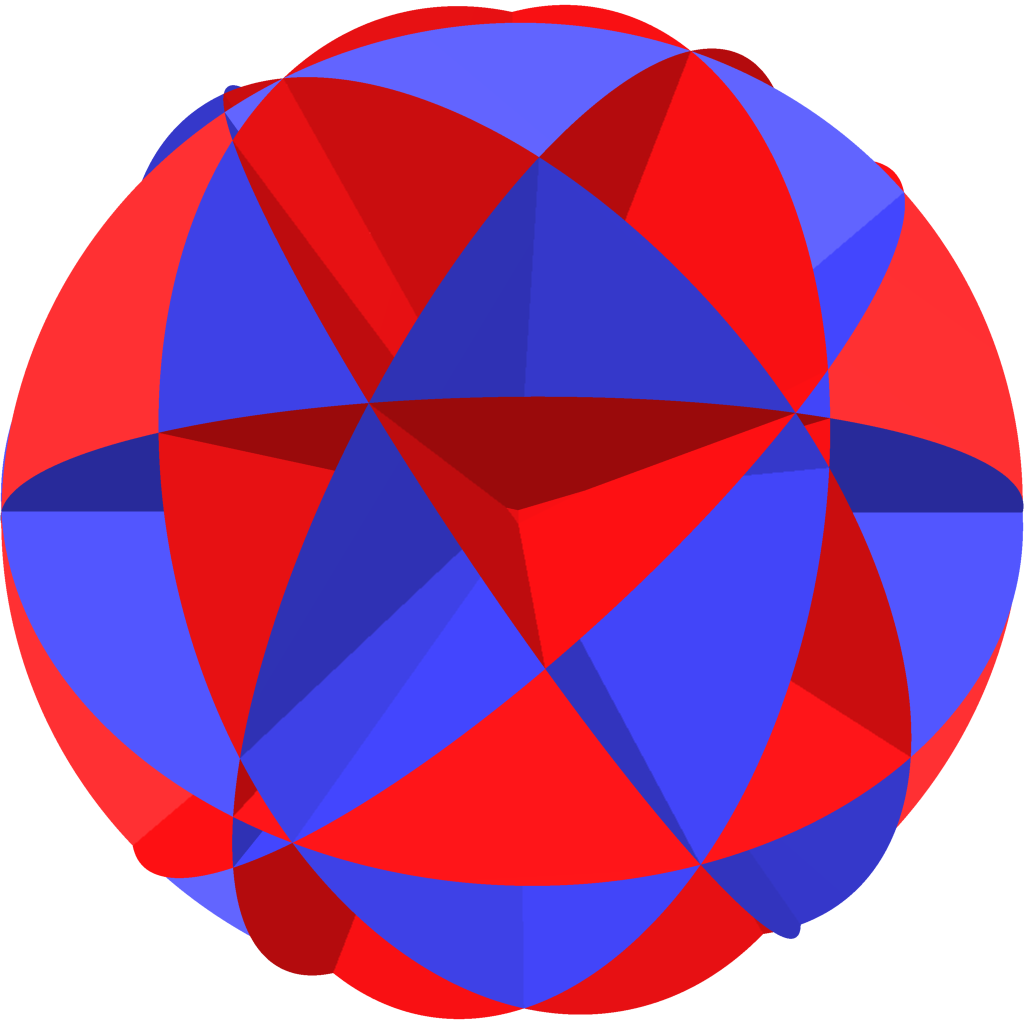

Poincaré polynomial:
\(K\!=\!\mathbb{C}\)
Coefficients are Betti numbers.
Example.
\(\mathrm{rk}\)
0
1
2
3
\(\mathcal{L}(\mathsf{A}_3)\)
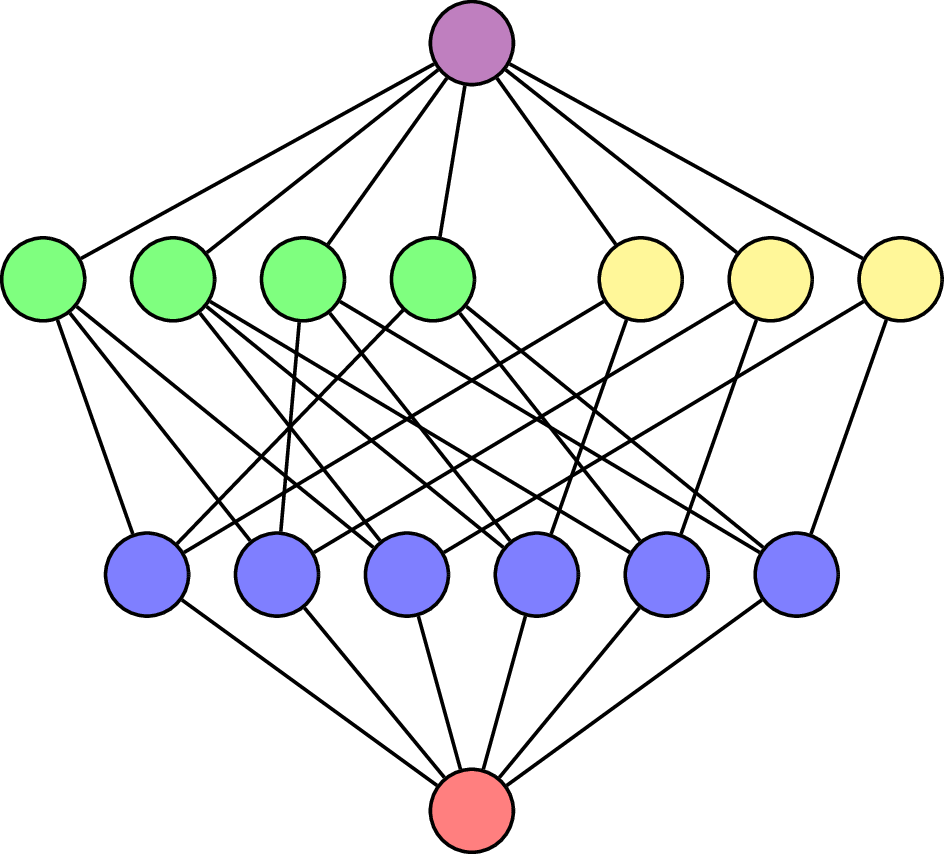
\(\hat{0}\)
\(\hat{1}\)

\(\mathsf{A}_3\)
With \(x\in \mathcal{L}(\mathcal{A})\), two new arrangements
Order complex: \(\Delta(\mathcal{L}(\mathcal{A}))\) set of flags in \(\mathcal{L}(\mathcal{A})\).
In \(\mathcal{A}_x\): \(x\) is now \(\hat{1}\). In \(\mathcal{A}^x\): \(x\) is now \(\hat{0}\).
For \(F = (x_1 < \cdots < x_\ell)\in\Delta(\mathcal{L}(\mathcal{A}))\), with \(x_0=\hat{0}\), \(x_{\ell+1}=\varnothing\),
Flag Poincaré polynomials.
Interval \([x_k, x_{k+1}]\)
in \(\mathcal{L}(\mathcal{A})\)
Example: \(\mathcal{A} = \mathsf{A}_3\).
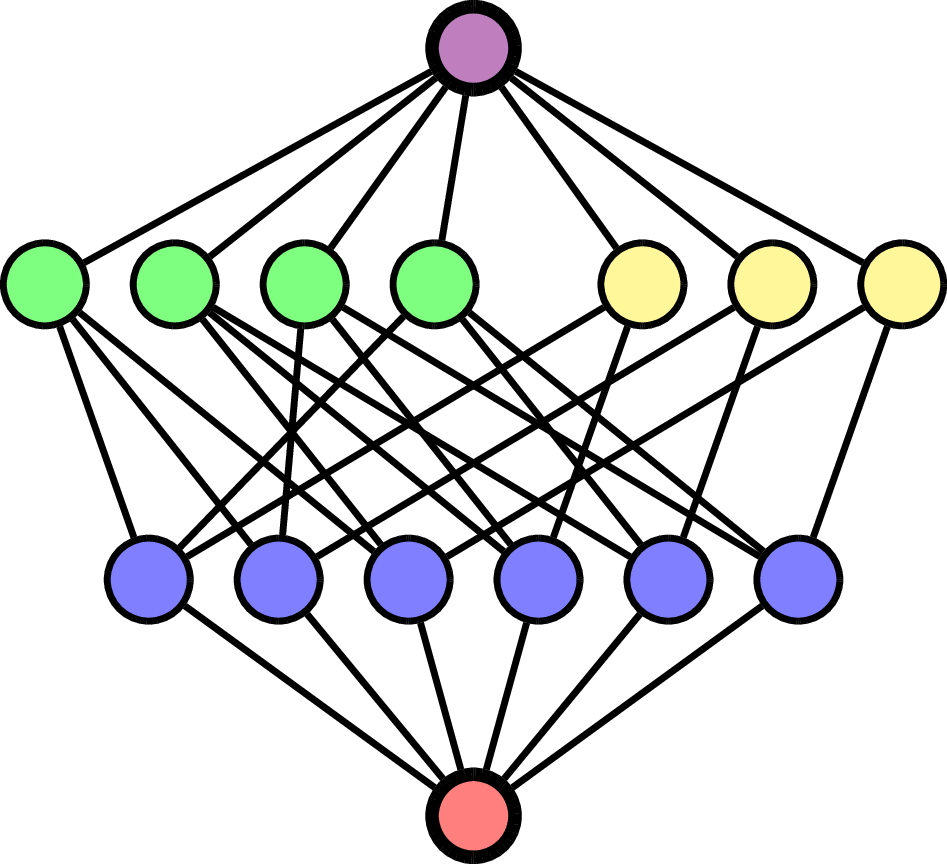
\(F\) empty flag in \(\Delta(\mathcal{L}(\mathcal{A}))\):
For \(F = (x_1 < \cdots < x_\ell)\in\Delta(\mathcal{L}(\mathcal{A}))\), with \(x_0=\hat{0}\), \(x_{\ell+1}=\varnothing\),

\(F = (\quad\;)\):

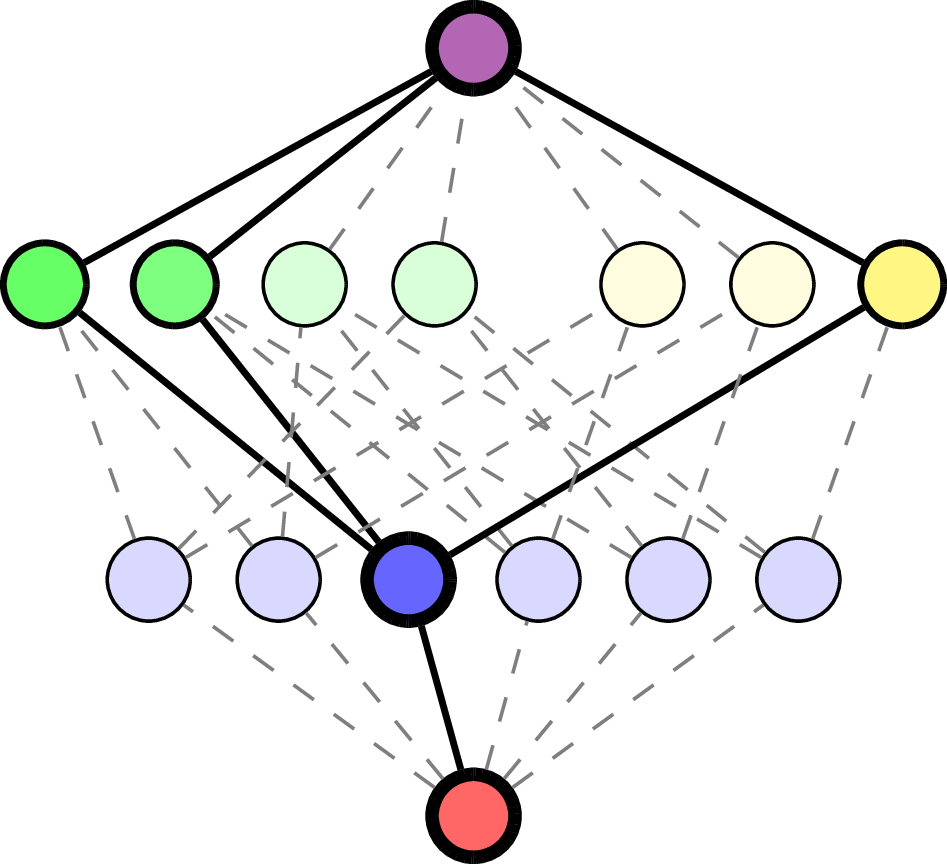



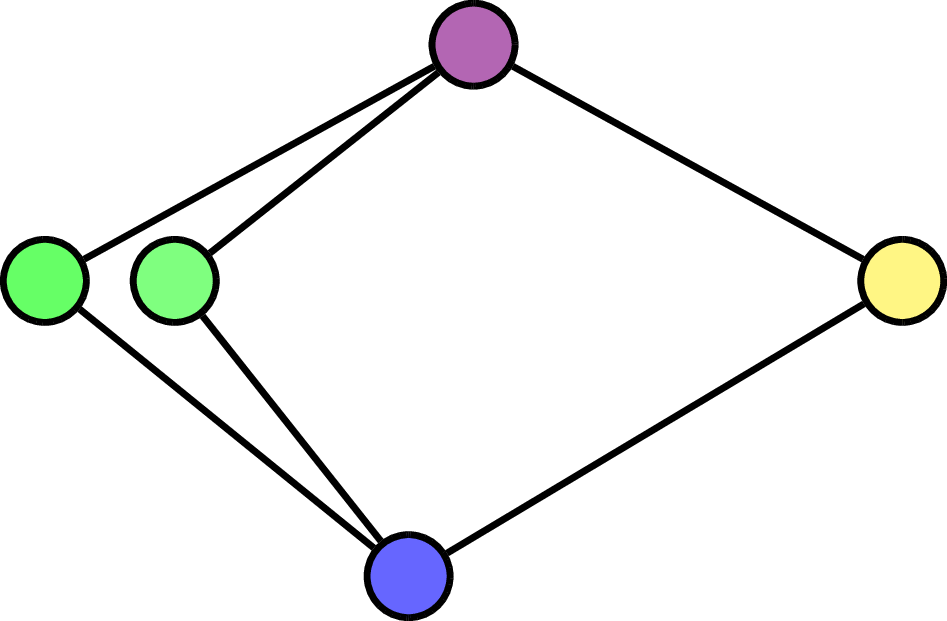

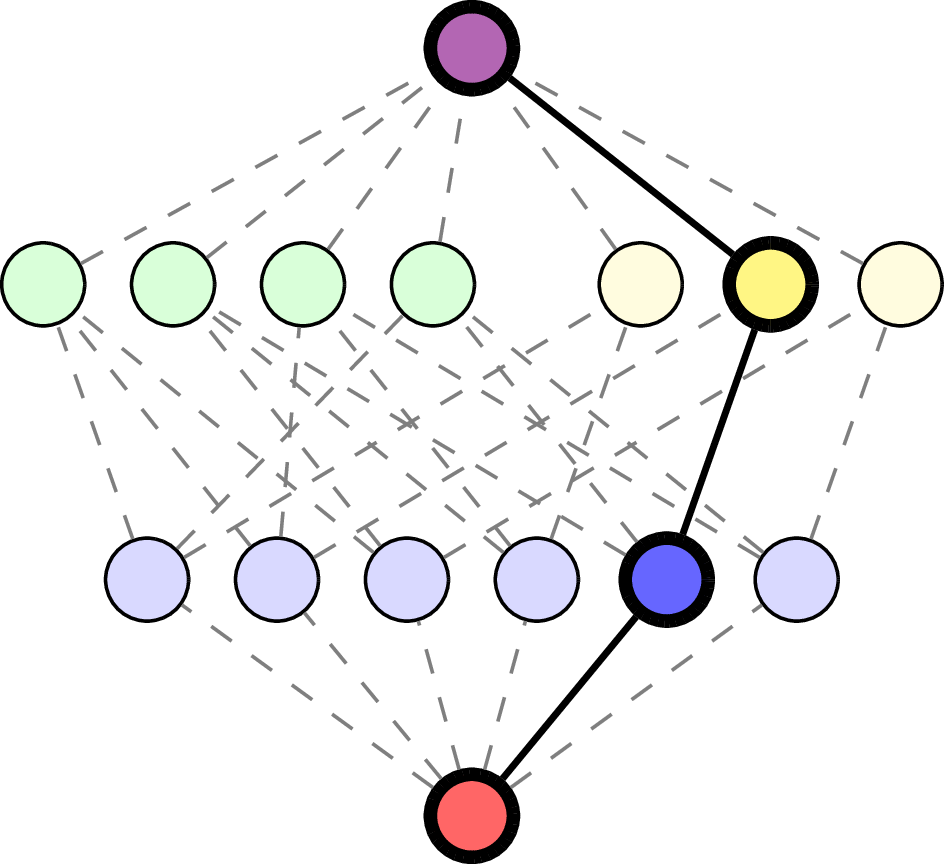




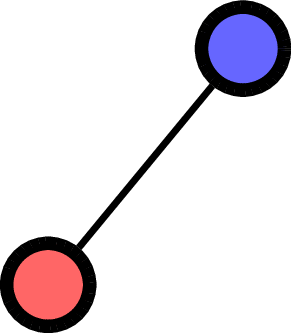
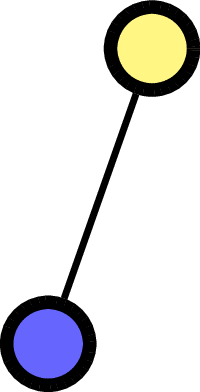
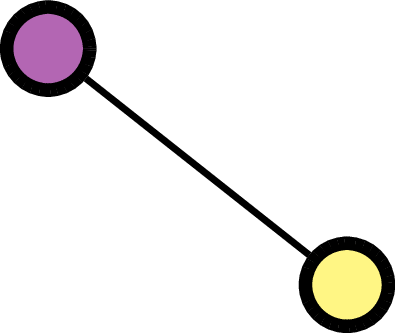

\(F = (\quad\;<\;\quad)\):

Self reciprocity
Set \(\widetilde{\mathcal{L}}(\mathcal{A}) = \mathcal{L}(\mathcal{A})\setminus\{\hat{0}\}\). The flag Hilbert–Poincaré series:
Thm (M.–Voll 2021). For \(\mathcal{A}\) defined over characteristic \(0\) field and central, then
Idea: \(\mathsf{fHP}_{\mathcal{A}}\) is equivalent to a multivariate \(p\)-adic integral.
Connections to zeta functions
Let \(K\) be a number field and \(\mathcal{O}_K\) its ring of integers.
Assume \(\mathfrak{o}\) is a compact discrete valuation ring, and
- \(\mathfrak{o}\) is an \(\mathcal{O}_K\)-module,
- \(\mathfrak{p}\) is its maximal ideal,
- \(\mathbb{F}_q \cong \mathfrak{o}/\mathfrak{p}\).
Write \(\mathcal{A}(\mathfrak{o})\) for set of linear polynomials in \(\mathcal{O}_K[X_1,\dots, X_d]\) representing the (abstract) arrangement \(\mathcal{A}\).
Say \(\mathcal{A}(\mathfrak{o})\) has good reduction over \(\mathbb{F}_q\) if
is the Igusa zeta function associated to \(\mathcal{A}(\mathfrak{o})\).
Thm (M.–Voll 2021). If \(\mathcal{A}\) defined over \(K\) with good reduction over \(\mathbb{F}_q\), then
For \(x\in\mathcal{L}(\mathcal{A})\), set
Note: a similar multivariate substitution holds, yielding another substitution to certain class-counting zeta functions.
We see all of the candidate poles coming from combinatorial data.

\(\mathcal{L}(\mathsf{A}_3)\)
Igusa zeta function associated to
Igusa zeta function of \(f_{\mathsf{A}_3}\): for all primes \(p\),




Class counting zeta function
Let \(\mathbf{G}\) be a nilpotent group scheme of finite type over \(\mathbb{Z}\):
Set \(\Gamma = K_{3,2}\) and \(\mathbf{G}_{\Gamma}\) graphical group scheme.

\(\mathbf{G}_{\Gamma}(\mathbb{Z}_p)\) =
\(\leqslant\mathrm{GL}_{12}(\mathbb{Z}_p)\)
\( =\langle I + E_{1,2} + E_{5,7} + E_{6,8},~\dots, \)
\( I + E_{1,6} - E_{2,8} - E_{3,10} - E_{4,12}\rangle\)
A graph \(\Gamma\) is a cograph if \(\Gamma\) contains no path on 4 vertices as an induced subgraph.
Let \(\mathcal{C}_n\) be the set of \(n\) coordinate hyperplanes in \(K^n\).
Thm (Rossmann–Voll 2019 + M.–Voll 2021). If \(\Gamma\) is a cograph on \(n\) vertices, then for all \(x\in\mathcal{L}(\mathcal{C}_{n+1})\) there exist polynomials \(f_x\) such that for all \(\mathfrak{o}\),
The polynomials are of the form
for \(\mu_x\in\{0,1\}, \nu_x\in\mathbb{Z}\).
\(\mathcal{C}_n\) coordinate hyperplanes in \(K^n\) and \(\mathcal{L}(\mathcal{C}_n)\cong 2^{[n]}\).
Class counting zeta function for \(\mathbf{G}_{\Gamma}(\mathbb{Z}_p)\) for all primes \(p\):
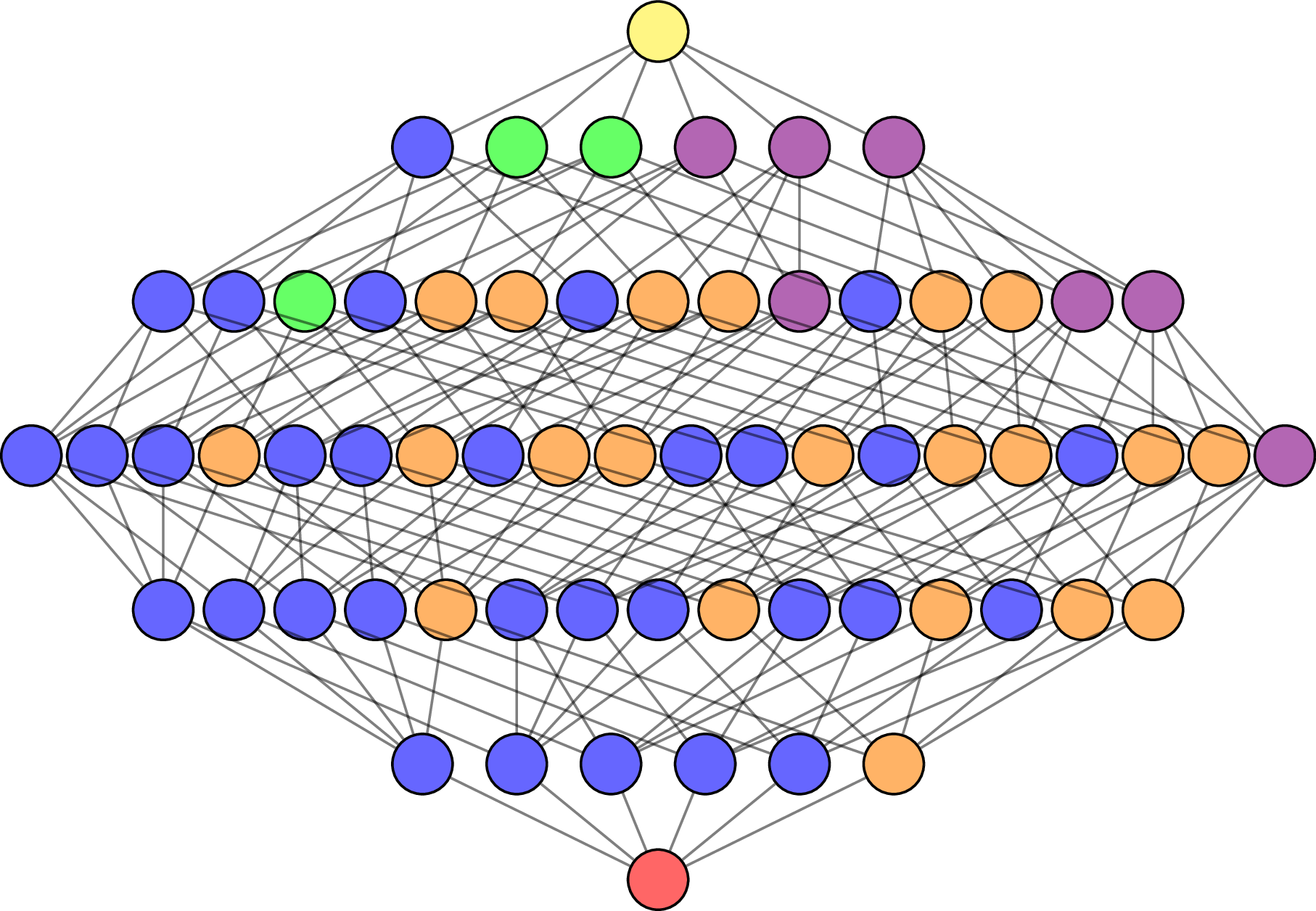





Details: Rossmann–Voll
A different coarsening
Set each \(T_x=T\) to get coarse flag Hilbert–Poincaré series:
Easier to see examples & other combinatorial properties.
Nice form:
All nonnegative coefficients. Computed with \(\mathsf{HypIgu}\).
Braid arrangement in \(\mathbb{Q}^{n+1}\):
SageMath
Do coefficients of \(\mathcal{N}_{\mathcal{A}}(Y, T)\) have combinatorial interpretation?
Conjecture (M.–Voll). For arbitrary \(\mathcal{A}\), the coefficients of \(\mathcal{N}_{\mathcal{A}}(Y, T)\) are nonnegative.
where
This is the Stanley–Reisner ring associated to \(\Delta(\widetilde{\mathcal{L}}(\mathcal{A}))\).
Question: Is \(\mathsf{cfHP}_{\mathcal{A}}\) the Hilbert series of an \(\mathbb{N}^2\)-graded algebra?
Coxeter arrangements
The Eulerian polynomial \(E_n(T)\) is combinatorially defined.
Thm (M.–Voll 2021). For a Coxeter arrangement \(\mathcal{A}\) with no \(\mathsf{E}_8\) factors:
Also related to numerators of Hilbert series of Stanley–Reisner rings of barycentric subdivisions of boundaries of simplexes.
Chambers of real arrangements
Assume \(K\subseteq \mathbb{R}\), so \(\mathcal{A}\) partitions \(\mathbb{R}^d\) into regions.


Say \(\mathcal{A}\) is simplicial if all chambers are simplicial cones.
Thm (Kühne–M. 2021). If \(\mathcal{A}\) is central and defined over \(\mathbb{R}\), then under coefficient-wise comparison:
Equality holds if and only if \(\mathcal{A}\) is simplicial.
Idea.
Zaslavsky's Theorem tells us that
where
Sum of Betti numbers of the complement of \(\mathcal{A}\) over \(\mathbb{C}\) is the number of connected components of the complement of \(\mathcal{A}\) over \(\mathbb{R}\).
This yields:
\(R_{\mathcal{C}}\) is the Stanley–Reisner ring of the barycentric subdivision of \(\partial \mathcal{C}\).
(Suggests \(\mathsf{cfHP}_{\mathcal{A}}(Y, T)\) is a "\(Y\)-twisted" version!)
Together with a deep result from Ehrenborg–Karu (2007) in algebraic combinatorics, for all chambers \(\mathcal{C}\),
under coefficient-wise comparison, where
Example. Four planes in \(\mathbb{R}^3\) in generic position.
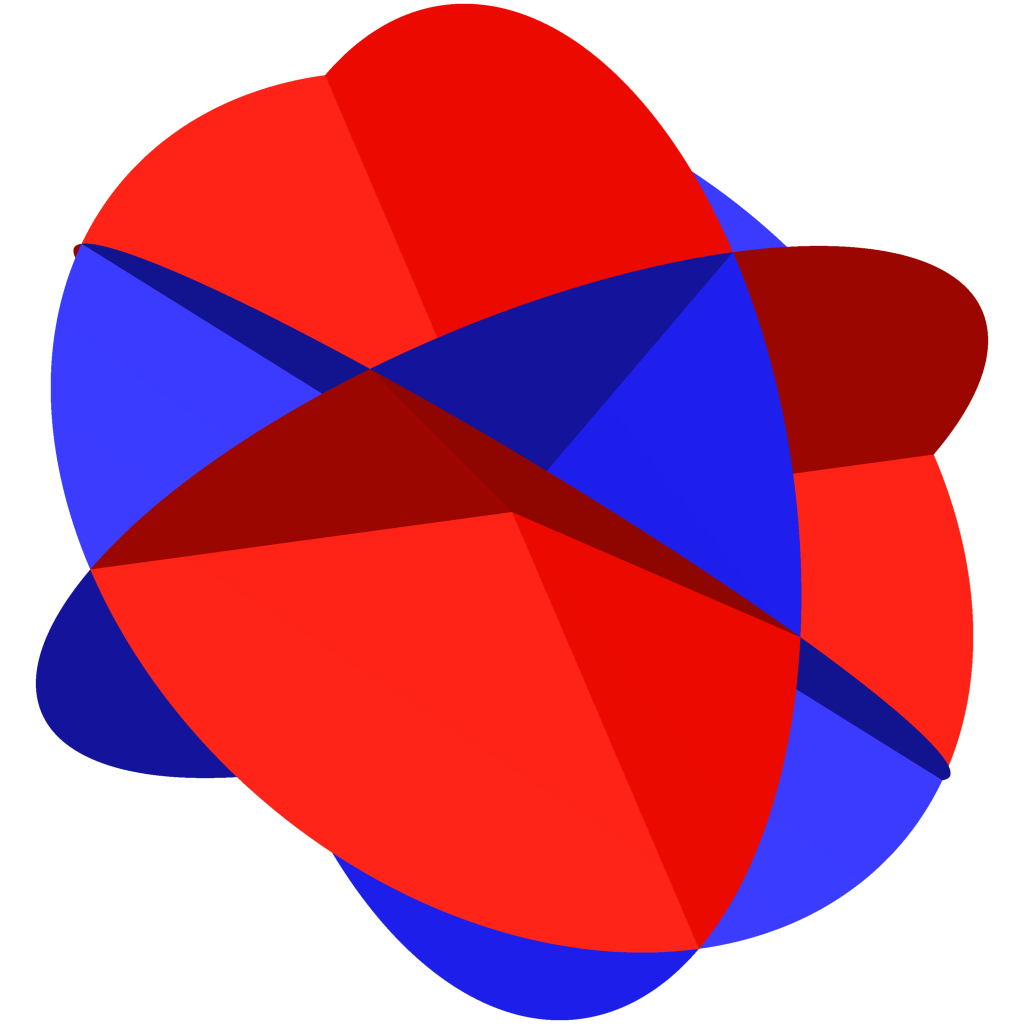
8 cones over triangles and 6 cones over squares
Conjecture (Kühne–M. 2021). For \(\mathcal{A}\) of rank \(r\geqslant 3\) over arbitrary fields \(K\),
When \(K=\mathbb{R}\), this means the average chamber of \(\mathcal{A}\) is "between" a simplicial cone and a cubical cone.
Thm (Kühne–M. 2021). The conjecture holds for \(r=3\) and \((r, K)=(4,\mathbb{R})\). If the conjecture holds, then the bounds are sharp.
Type \(\mathsf{B}\) Eulerian polynomial, \(E_r^{\mathsf{B}}(T)\), similar to type \(\mathsf{A}\).
Numerators of Stanley–Reisner rings of barycentric subdivisions of boundaries of hypercubes.
Summary
Flag Hilbert–Poincaré series shows combinatorial features of
- Igusa zeta functions of products of linear polynomials,
- class-counting zeta functions of nilpotent "cographical" groups.
Thm. \(\mathcal{A}\) central and characteristic \(0\) \(\implies\) \(\mathsf{fHP}_{\mathcal{A}}\) self-reciprocal.
Conj. \(\mathcal{N}_{\mathcal{A}}(Y, T)\) has nonnegative coefficients.
Thm. \(\mathcal{A}\) over \(\mathbb{R}\) and simplicial \(\implies\) \(\mathcal{N}_{\mathcal{A}}(1, T)=\pi_{\mathcal{A}}(1)\cdot E_{\mathrm{rk}(\mathcal{A})}(T)\).
